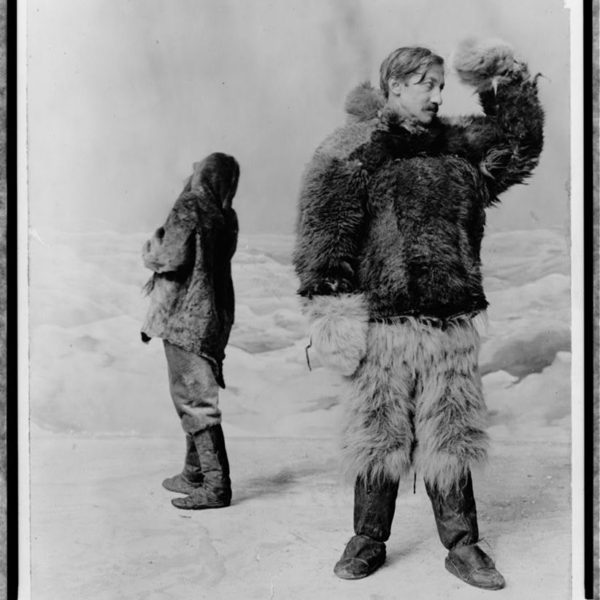
Erieking writes us to ask: I’m looking to travel to Europe next year, and will be in many different climates. I have my summer wardrobe covered, but am curious what you’d recommend for winter travel in Scandinavia? I have a budget of about $500-1,000.
I used to travel a lot to Russia in the fall and winter months, so I can relate to how difficult it can be to pack light, but also have everything you need. The good news is that above 20 degrees Fahrenheit, you can rely on smart layering. Doing so will allow you to be a bit more adaptable as the weather changes, whereas if you pack a big, warm coat, you might be too warm on days that are only chilly. I recommend the following:
- Baselayers: Baselayers will be your best friend. Layer them underneath everything and you’ll be surprised by how little else you need. I like Smartwool, which you can often find on sale at Campmor and Sierra Trading Post. The second has options by other companies as well. Just make sure you get the heavyweight stuff.
- Outerwear: If you mostly wear tailored clothing (suits, sport coats, and the like), then you’ll need a traditional coat (some stores call these dress coats). Brooks Brothers and O’Connell’s are good places to start, but for something more affordable, check your local thrift stores. For anything more causal, pick whatever suits your taste. Brooks Brothers and Ralph Lauren often have nice looking designs, and they regularly discount stuff by 25% during their mid-season sales. J. Crew is a more affordable option, but their constructions often feel lighter and thinner.
- Sweaters: Cashmere is warmer than regular wool, but nice cashmere is expensive, unless you hunt for something vintage. For practicality and price, I recommend thick wool sweaters (ideally in turtleneck form, so you get some extra protection). Inis Meain’s merinos and O’Connell’s Shetlands are some of my favorite sweaters, but they’re a bit expensive. For more affordable options, I like Club Monaco. Just make sure to avoid the cashmere stuff, as it’ll be too thin for your needs.
- Tailored jacket: Get a heavy brown tweed, ideally with some kind of pattern, such as a herringbone or check. Any place that sells suits should also have sport coats. You can check out these stores to start.
- Pants: For casualwear, I like raw denim. It’s typically heavier than your run-of-the-mill jeans from Levis, so it feels warmer to me (even if the effect is just psychological). I wear 3sixteen’s SL-100x model, and really like them, but you can find more affordable options from our advertiser Gustin. For something dressier, get a pair of mid-grey wool flannels. Again, you can check out these stores to start.
- Shirts: Bushed cotton flannels, chambrays, and wool-cotton blends all make for great cold-weather shirtings, but when I travel, I like to pack light, so I bring my favorite shirts of all: oxford cloth button downs. The upside is that they work equally well with sport coats and casualwear.
- Thick, wool socks: Feet can be hard to keep warm, so get thick wool socks (they’re warmer than cotton, and help wick sweat away). Just make sure your feet still fit comfortably into your shoes. An overly tight fit can restrict circulation, which will make your feet feel cold. Again, I like Smartwool.
- Gloves: I find that leather gloves lined in cashmere or rabbit hair feel warmer than wool gloves alone. You can get them from Dents or Merola, or have them custom made through Chester Jefferies (I had them make me this design, which you can order if you show them those pictures). For something more affordable, browse Nordstrom. They have some great options and an unbeatable return policy to boot.
- Scarves: I love Drake’s scarves, but they’re expensive. Luckily, cheaper options will keep you just as warm. Just make sure to get something made from cashmere or merino, and in a long enough length so you can wrap your scarf around your neck twice. You can get Johnston’s of Elgin scarves for about $40-50 from Sierra Trading Post once you apply one of their DealFlyer coupons.
- Shoes: When it’s cold, it’s likely wet. Shoes made with what’s known as a storm or fudge welt will be more waterproof, but truthfully, I’ve been fine with regular Goodyear welt constructions, even in the snow. I just recommend bringing at least two pairs (ideally boots), and rotating between them. Commando or studded Dainite soles will also give you better traction, and they won’t grind down as easily as wet leather. For where to turn, the sky is the limit when it comes to expensive makers, but you can use this list for more affordable buys. I really like Meermin.
The above should get you through any kind of weather that’s 20 degrees and above. Even in Moscow, things only dip below that for maybe two or three weeks per year. If you find yourself in icier conditions, then you’ll need a down parka, but good ones will cost you dearly (if you care to know, my dream pick is Nigel Cabourn’s Everest parka, which you know is serious business because it has the word Everest in it). I say plan your trips smartly so you don’t have to buy such a thing.
